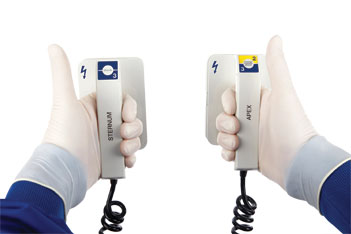
As aspects of the Patient Protection and Affordable Care Act (PPACA) gradually kick in, the application, management and makeup of healthcare benefits, offerings and costs will change for many small businesses.
Small business owners may be faced with:
- Coverage requirements prohibiting insurers from denying coverage or using price discrimination to target those with preexisting conditions; and
- The establishment of government sponsoredhealth plans.
Despite administration assertions to the contrary, there will also be additional costs and administrative oversight that even the smallest company will need to deal with. In surveys conducted by Information Strategies, Inc. (ISI), looming healthcare benefit changes are increasingly occupying small business leaders’ attention at the present time.
At a minimum, requirements such as mandated wellness programs, minimum coverage levels and employee participation are forcing small firms to address often painful healthcare benefit decisions.
Nationally, three-quarters of businesses with 10 to 24 workers offer benefits. About half of those with three to nine employees provide health plans. By comparison, 99 percent of firms with more than 100 employees offer benefits. It is estimated that there are more than 1.2 million firms that come under the new rules primarily affecting employers with 50 or more employees.
The new IRS rules allow businesses to use one of three methods to determine the number of full-time workers: counting bodies, weeks worked or hours worked – whichever is easier and more beneficial. In addition, the IRS stated it would permit businesses to claim the credit this year even if they do not currently meet a requirement under the law to provide the same level of coverage to every worker.
The first decision small firms will have to face is whether to continue providing such coverage or pay a yearly penalty per employee. This choice was one under consideration by one out of every four small businesses surveyed by ISI in the first quarter of 2011.
The penalty for failing to provide coverage is a nondeductible $2,000 per employee, per year excise tax assessed monthly ($166.67 per month) for each month the employer failed to provide coverage. For purposes of computing the penalty, the assessment of the excise tax begins after a 30-employee threshold is passed.
For those who plan to continue offering coverage, private insurers suggest that premiums will rise for small employer groups. The experience of small business owners in California does not contradict this expectation. There, small group premiums have gone up significantly despite the efforts of the state insurance commissioner to hold the line.
Employers will also face an increase in payroll taxes. Under current law, most wages are subject to a 1.45-percent Medicare payroll tax. The PPACA adds 0.9 percent surtax to wages in excess of $200,000 for single filers and $250,000 for joint filers.
To balance this trend, as many as four million small businesses might be eligible for federal tax credits to help cover the cost of health insurance for their workers. Small businesses were sent government postcards alerting them to the availability of the credit—which covers up to 35 percent of their healthcare costs—in hopes that more would choose to offer the coverage. The IRS also issued a series of rules clarifying eligibility for the credit, which is available to businesses with fewer than 25 employees and paying an average salary of less than $50,000 a year. The value of the credit phases out as the number of workers and their salaries rise, with the full 35 percent credit available only to businesses with fewer than 10 full-time workers paying an average salary of less than $25,000 (see next page for details on how this program works).
Healthcare reform has some additional helpful provisions for small business owners. Often, small business owners provide differing plans for themselves and senior management. These highly compensated employees have plans that significantly exceed the value of benefits offered to non-highly compensated employees. If they fail to meet IRS standards, the plan may lose its tax-qualified status. Administering “non-discriminatory” tests are likely to be highly complex, complicated even further by the fact that the actual comparisons may not be available until the end of the tax year.
Beginning this year, a simple cafeteria plan will be offered to help those employing 100 or fewer. This uniform plan will avoid the non-discrimination rules. To satisfy safe harbor (compliance) rules, the employer must meet both contribution and participation requirements. By following the safe harbor, an employer may safely retain certain discriminatory benefits for their highly compensated employees.
To meet the contributory safe harbor, the employer must contribute to the plan, on behalf of each employee (regardless of an employee’s actual contribution), an amount that is at least:
- Two percent of an employee’s compensation, or
- The lesser of six percent of an employee’s compensation or twice the amount of salary reduction contributions of each employee.
In recent years, many smaller firms have been turning to consumer-directed healthcare offerings, including health reimbursement accounts (HRAs), health savings accounts (HSAs) and flexible spending accounts (FSAs). For distribution purposes, PPACA has changed the definition of a “qualified medical expense.” These tax devices will only apply to the reimbursement of the costs of insulin and prescription drugs in taxable years starting after December 31, 2010. The additional tax on impermissible distributions from an HSA or Archer MSA (the predecessor to the HSA) will increase from 10 percent to 20 percent.
There will also be limits imposed on the amount that an employee can elect to contribute to a flexible spending arrangement under an employer sponsored cafeteria plan. Prior to the PPACA, there was no limit. After 2010, the annual limit is $2,500 subject to future indexing.
These plans have been providing smaller firms with significant reduction in premiums and should be further explored if a preferred provider plan is now in effect. For insurers, the small business market presents a big opportunity. As noted earlier, nationally, three-quarters of businesses with 10 to 24 workers offer benefits. About half of those with three to nine employees provide health plans. By comparison, 99 percent of firms with more than 200 employees offer benefits.
Insurers, on the other hand, face the difficult requirement of spending at least $.80 cents of every premium dollar on healthcare services. Insurers have also reduced broker commissions, meaning professional help for smaller employees may not be as prevalent as in prior years. Small business owners should shop for the best rates and start earlier in the plan year.
What has yet to be determined is the role exchanges will play in the healthcare benefits experience for small businesses. If Massachusetts is a harbinger, then many firms will opt to provide incentives for employees to seek individual coverage through these programs and do away with healthcare offerings. The administration is trying to address these concerns before most provisions begin in 2014.
According to attorney Ben A. Neibur, “Administering and monitoring compliance will, unfortunately, absorb both public and private dollars adding to the associated expenses of what, already, is the world’s most expensive health care system.”
The IRS stated the value of the small business tax credit would not be reduced by State healthcare tax credits, which exist in as many as 20 states, according to a list compiled by the National Conference of State Legislatures. Businesses will also be permitted to apply the credit to vision, dental and other such coverage, so long as they pay at least 50 percent of their workers’ premiums.
An important selling point has been a tax credit that the nation’s new healthcare law provides to companies with fewer than 25 employees and moderate-to-low pay scales to help offset the cost of providing benefits. The tax credit is one of the first few provisions to kick in—much of the law rolls out over the next few years.
“We certainly did not expect to see this in this economy,” said Gary Claxton, who oversees an annual survey of employer health.
By 2014, employers who have more than 50 employees must offer health insurance benefits or pay penalties ($2,000 per employee). The 50-employee threshold may discourage growing enterprises from adding full time employees.
Companies with 25 or fewer employees who meet certain wage requirements will also be able to get credits toward health insurance purchases. Businesses that pay more than 50 percent of employees’ health benefits, have fewer than 26 employees and pay average annual wages of less than $50,000 can claim a tax credit of up to 35 percent of the cost from the 2010 tax year through the 2013 tax year. The credit will go up to 50 percent in 2014 and can be used for two consecutive years after that. The open question is: What happens in 2017? Will small businesses bear the full cost?




